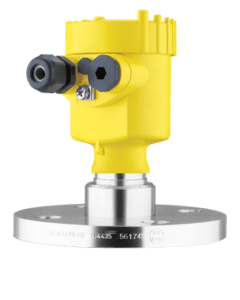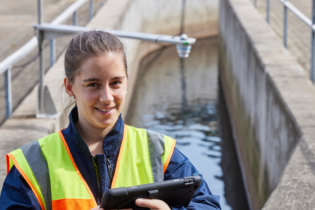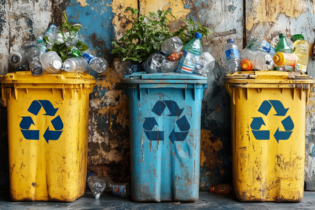The treatment of water to potable standards is a complex process that often requires the addition of ozone to assist in the elimination of contaminants, such as bacteria, viruses and metals. This must be done under strict safety conditions, as ozone can be reactive and corrosive.
VEGA’s pressure transducers play an important role in safe ozone generation, as well as in the production of potable water. The VEGABAR 82 was used with the ozone treatment of water from the Baden-Württemberg supply system in Germany. The Baden-Württemberg system is one of the largest and most traditionally far-reaching water supplies. Around 250 cities and municipalities are supplied with about 90 million cubic metres of drinking water each year. Water is transported from the Danube valley at the city of Ulm via the Remstal river valley to Stuttgart, where it is then treated. This is done via a raw water pump that draws water directly from the river, as well as a pressure pipe from the pumping station to the waterworks and the treatment facilities. n peak times, up to 2 300 litres of river water per second can be converted to drinking water. Highly active oxygen (ozone) for oxidation and disinfection is added during the water treatment process. To ensure that pressure measurement in the ozone collection pipe and at other important measuring points is absolutely safe and reliable, the engineering department decided to use VEGABAR 82. VEGABAR 82 The VEGABAR 82 is the pressure transmitter with a ceramic CERTEC® measuring cell and a ‘second line of defence’. This is an additional process separation by means of a gas-tight feedthrough above the process connection. Although the measuring cell is permanently resistant to ozone, the second line of defence provides an extra layer of protection against the leakage of ozone from the pipeline through the pressure transmitter.In the VEGABAR 82 process pressure transmitter, the process temperature is measured directly behind the diaphragm of the ceramic measuring cell. Even very fast temperature changes caused by changing media are detected instantaneously and electronically compensated. The user can thus be sure that the sensor is always delivering the correct measured value.
The key element of pressure instrumentation from VEGA is the ceramic capacitive pressure measuring cell CERTEC®. It is more precise than monolithic ceramic measuring cells and boasts a significantly higher overload resistance. Moreover, it is characterised by industry-leading, long-term stability and high-temperature resistance. To ensure the highest quality, VEGA develops and manufactures all the core technologies of its instruments in-house. This even applies to the CERTEC® measuring cells, which are produced under class 100 cleanroom conditions. HOW IS OZONE FORMED? Ozone oxidises dissolved and particulate organic matter and kills or inactivates existing microorganisms. It is always formed when some form of energy decomposes molecular oxygen (O2) into individual oxygen atoms (O), which then react with O2 to form ozone (O3). This can occur through UV radiation, lightning strikes and also high-voltage electrical discharges. Because of its high reactivity, ozone is produced, transported and added to the water on the spot and in compliance with strict safety regulations.The actual production process takes place in pressurised reactors, where electrical energy is applied to convert oxygen into ozone. Then, the resulting gas mixture flows into an ozone collecting pipe. The maximum ozone concentration is about 180 g/Nm³ at an operating pressure of 1.3 bar. Injectors feed the ozone into the water, while mixers distribute the tiny ozone bubbles evenly throughout the water volume. The water remains in large containers for a few minutes, during which time oxidation and disinfection take place.








